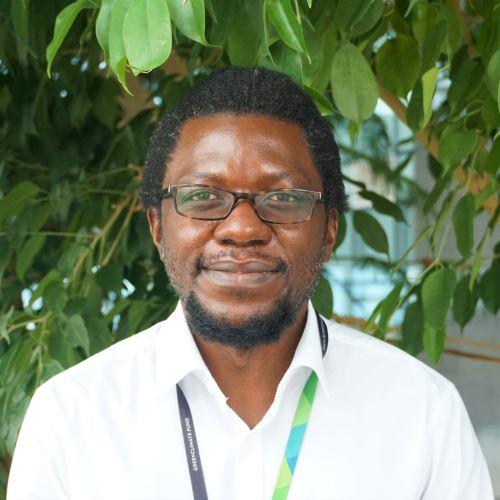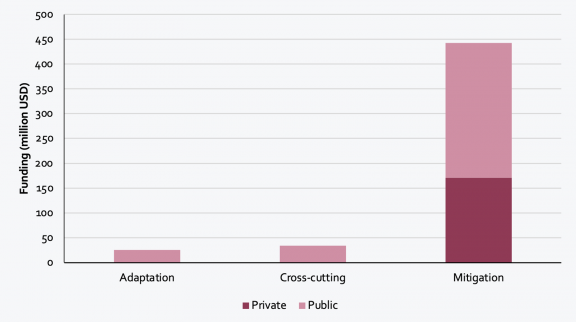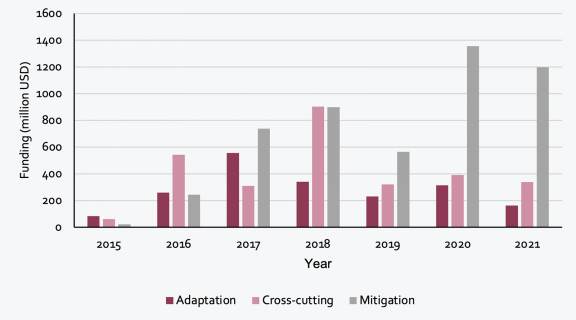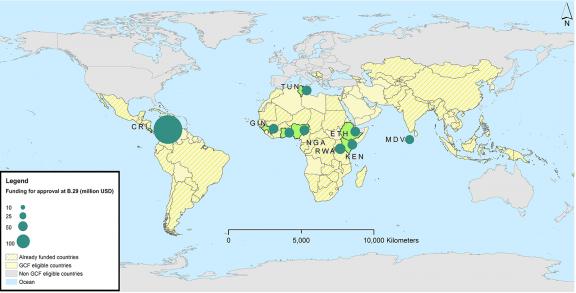Data Outlook: B.29, what would it mean for the GCF’s portfolio?
The 29th meeting of the GCF Board began on 28 June and will come to a close early morning of 2 July KST. Let's look at the type and characteristics of projects the GCF Secretariat has presented to the Board for its consideration and approval at B.29, and see what the addition of these projects would mean for the GCF’s overall portfolio.
Overview of the projects being considered at B.29
Initially, the GCF Secretariat had reviewed and evaluated seven funding proposals (FPs); however, the independent Technical Advisory Panel (iTAP) decided to endorse only four of these seven FPs for consideration and approval by the Board at B.29. All detailed information on these FPs being considered at B.29 is available here. Compared to B.28 with 15 projects approved then, these are far less in number. The four projects equate to only about half of the total amount approved at B.28. The three projects not endorsed for the Board’s consideration at B.29 included one cross-cutting project and two adaptation projects. One of these three projects did not get the iTAP endorsement for the second time.
The projects to be considered at B.29 include three public sector projects and one private sector project, being proposed by three International Access Entities (IAEs) and one Direct Access Entity (DAE). If all were approved at B.29, a total of USD 501.1 million will be extended to nine countries: in particular, Costa Rica, the Maldives, and Rwanda will receive USD 271.3 million, USD 25.1 million, and USD 33.8 million towards mitigation, adaptation, and cross-cutting projects, respectively.
- FP165: Building Climate Resilient Safer Islands in the Maldives
This project, proposed by the Government of the Maldives and the Japanese International Cooperation Agency (JICA), aims to strengthen the long-term and sustainable resilience of national land against climate change through an integrated coastal zone management system. - FP166: Light Rail Transit for the Greater Metropolitan Area (GAM) – Costa Rica
This project, submitted by the Central American Bank for Economic Integration, aims to establish a light-rail train for the Greater Metropolitan area of San Jose with the ultimate objective of reducing emissions in the transport sector by 7,622,805 tCO2e. - FP167: Transforming Eastern Province through Adaptation – Rwanda
This project, being proposed by the Rwanda Forestry Authority, ENABEL, and the International Union for Conservation of Nature (IUCN), aims to transform the land management practices through building community resilience to enhance livelihoods, food, and water security of the most vulnerable in society. - FP168: Transforming Eastern Province through Adaptation – Multi-country project
This is a multi-country (regional) mitigation and also the only private sector project involving Ethiopia, Ghana, Guinea, Kenya, Nigeria, and Tunisia that will together receive a total GCF funding of USD 170.9 million. It is proposed by the African Development Bank and aims to reduce GHG emissions through distributed and decentralised renewable energy to rural areas.
Seven out of the nine countries that are covered by proposed FPs are African States. If all projects are approved at B.29, the GCF funding will extend to 123 countries.
Figure 1 represents the funding according to the themes: adaptation and mitigation. It shows that the majority of funding would go towards mitigation. The funding allocation across adaptation and mitigation themes shown in Figure 1 will not be different from the tendency towards more funding being allocated to mitigation projects, which emerged in 2017 and has been consistent since B.26 (Figure 2 and Figure 3).
According to the GCF’s Updated Strategic Plan 2020-2023, the GCF Secretariat aims to work towards a “balanced funding across mitigation and adaptation in line with the Governing Instrument, which aims for a 50:50 balance between mitigation and adaptation over time.” (GCF/B.27/21). However, our data analysis shows that if all 4 projects were to be approved at this Board meeting, mitigation will still take a more significant proportion in both nominal and grant equivalent terms. Given this result, the GCF would need to consider investing more in adaptation projects at subsequent Board meetings.
In Figure 4, the shaded parts represent countries that have already received GCF funding since the GCF’s inception. The figure further shows the geographical distribution of the funding for approval at B.29.
The total funding amount varies across regions and thematic focus, as shown in Figure 5. Countries in the Asia Pacific region have received the largest share of approved funding since the GCF’s inception, followed by Latin America and Caribbean countries, and Africa.
I look forward to following these discussions in the remainder of B.29.
Disclaimer: The views expressed in blogs are the author's own and do not necessarily reflect the views of the Independent Evaluation Unit of the Green Climate Fund.





